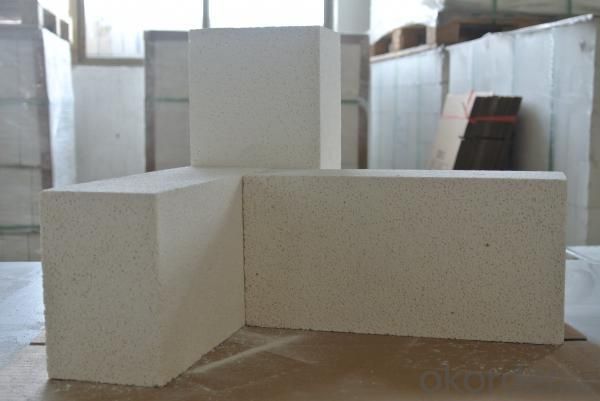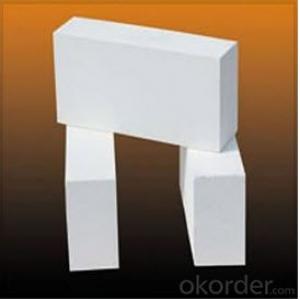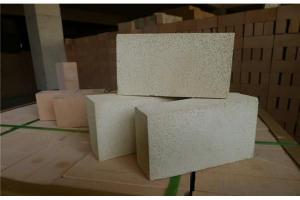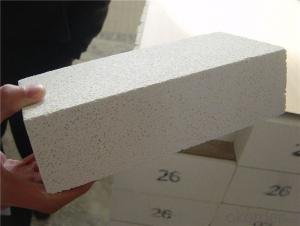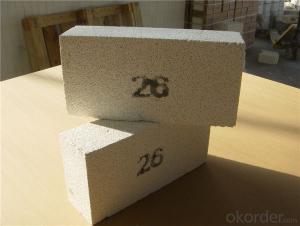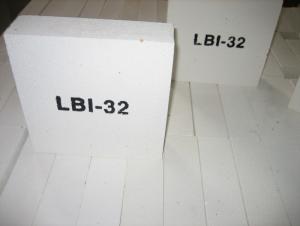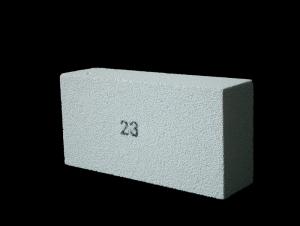GJM30 Insulating Fire Brick
- Loading Port:
- China Main Port
- Payment Terms:
- TT or L/C
- Min Order Qty:
- 1000 pcs pc
- Supply Capability:
- 1000 Tons Per Month pc/month
OKorder Service Pledge
OKorder Financial Service
You Might Also Like
General Information of Insulating Fire Brick GJM30
Insulating fire brick GJM30 are produced by mixing, casting or extruding, drying, sintering and grinding. Our insulating fire bricks GJM30 temperature is 1650℃(3000℉). We could supply a wide range of shapes.
To make our firebricks more energy and cost effective, we have different manufacturing methods for our insulating fire bricks casting and extruding method.
For insulating fire bricks GJM30,we choose the extruding method. Extruding insulating fire bricks have better strength and offering great performance in load bearing applications and in conditions where abrasion from mechanical abuse or flow of hot gases.
Characteristics of Insulating Fire Brick GJM30
Our insulating bricks GJM30 exhibit the following characteristics:
High refractoriness temperature
Strong resistance to slag
Good high temperature properties
Typical Application of Insulating Fire Brick GJM30
Typical applications of magnesia bricks include ferroalloy furnace, metal mixer, Non-metallurgy industry furnace, high temperature kiln, calcined lime furnace, regenerator in glass furnace.
Technical Data of Insulating Fire Bricks GJM30
|
| GJM30 |
Physical Properties: |
|
|
Classifiction Temperature | ℃ | 1600.0 |
Density | Kg/m3 | 1000.0 |
Cold Crushing Strength | Mpa | 2.8 |
Reheating Linear Change(24hrs) |
|
|
1600℃ | % | 0.7 |
Hot Load Strength Deform(90 minutes) |
|
|
1370℃ at 0.069 Mpa(10psi) | % | 0.2 |
Thermal Conductivity |
|
|
400℃ | W/m.k | 0.3 |
600℃ | W/m.k | 0.3 |
800℃ | W/m.k | 0.4 |
1000℃ | W/m.k | 0.4 |
1200℃ | W/m.k | 0.4 |
Specific Heat | KJ/Kg.K | 1.1 |
Chemical Analysis: |
|
|
Al2O3 | % | 70.0 |
SiO2 | % | 28.3 |
Fe2O3 | % | 0.5 |
TiO2 | % | 0.1 |
CaO | % | 0.1 |
MgO | % | 0.1 |
Na2O+K2O | % | 0.7 |
CNBM has success in insulating fire bricks due to their cost-effectiveness, excellent insulation performance and high temperature properties. CNBM also has experience in magnesia brick application and would like to assist you in product selection, system design, and installation techniques.
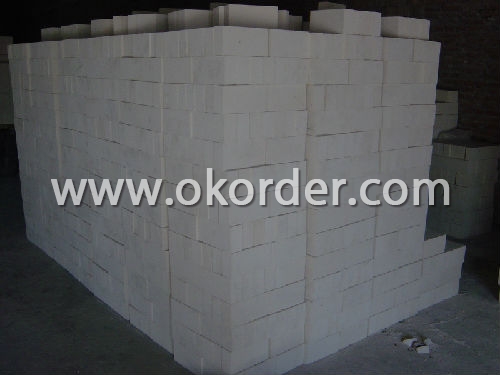
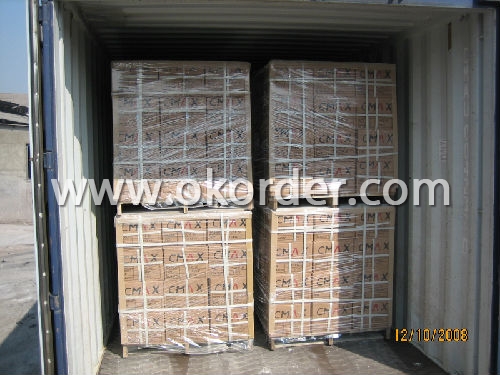
- Q: Are insulating fire bricks resistant to flame penetration?
- Yes, insulating fire bricks are resistant to flame penetration.
- Q: Can insulating fire bricks be used as a lining for boilers?
- Yes, insulating fire bricks can be used as a lining for boilers. They have excellent thermal insulation properties, high heat resistance, and can withstand the extreme conditions within a boiler. Insulating fire bricks help in minimizing heat loss, improving energy efficiency, and maintaining consistent temperatures within the boiler.
- Q: Can insulating fire bricks be used for insulation in smelting furnaces?
- Yes, insulating fire bricks can be used for insulation in smelting furnaces. Insulating fire bricks are designed to withstand high temperatures and provide excellent insulation properties. They have low thermal conductivity, which helps to retain heat within the furnace and prevent the loss of energy. This makes them ideal for use in smelting furnaces where high temperatures are required. Additionally, insulating fire bricks are lightweight, making them easy to handle and install in the furnace. They are also durable and resistant to thermal shock, allowing them to withstand the extreme conditions of smelting processes. Overall, insulating fire bricks are a reliable and effective choice for insulation in smelting furnaces.
- Q: How do insulating fire bricks affect the overall thermal stability of a structure?
- Insulating fire bricks enhance the overall thermal stability of a structure as they have low thermal conductivity, preventing heat transfer and minimizing energy loss. By acting as a barrier, these bricks help in maintaining a consistent temperature within the structure, reducing the impact of external temperature fluctuations. This enhanced thermal stability promotes energy efficiency, cost savings, and a more comfortable environment within the structure.
- Q: Do insulating fire bricks require special handling?
- Special handling is necessary for insulating fire bricks. These bricks are manufactured using lightweight refractory materials and are specifically engineered to endure high temperatures. Because they are delicate, they must be treated carefully to avoid any breakage or harm. It is advised to employ appropriate lifting and carrying methods, including the use of gloves and tongs or lifters, in order to prevent accidents or injuries. Moreover, it is crucial to store insulating fire bricks in a dry and sheltered location to prevent moisture absorption, which can impact their thermal characteristics.
- Q: Can insulating fire bricks be used in the construction of furnaces?
- Yes, insulating fire bricks can be used in the construction of furnaces. Insulating fire bricks are specially designed bricks that have high insulating properties, allowing them to withstand high temperatures while minimizing heat loss. These bricks are made from lightweight materials such as clay, silica, and alumina. They have a low thermal conductivity, which means they can effectively maintain heat within the furnace while preventing the outer surface from becoming too hot. This makes them ideal for lining the walls, roof, and floor of furnaces, helping to increase energy efficiency and reduce fuel consumption. Additionally, insulating fire bricks are resistant to thermal shock, making them highly durable and long-lasting in the harsh conditions of a furnace. Overall, insulating fire bricks are a popular choice for furnace construction due to their excellent insulating properties and ability to withstand high temperatures.
- Q: Are insulating fire bricks suitable for use in incinerators?
- Yes, insulating fire bricks are suitable for use in incinerators. These bricks are designed to withstand high temperatures and provide excellent thermal insulation, making them ideal for insulating the inner walls of incinerators. They help to retain heat, improve energy efficiency, and prevent heat loss, thereby enhancing the overall performance of the incinerator.
- Q: Do insulating fire bricks have good mechanical strength?
- Yes, insulating fire bricks have good mechanical strength. They are specifically designed to withstand high temperatures and provide excellent thermal insulation while maintaining their structural integrity.
- Q: Are insulating fire bricks suitable for use in the construction of smelters?
- Yes, insulating fire bricks are suitable for use in the construction of smelters. These bricks are designed to withstand high temperatures and provide excellent insulation properties, making them ideal for lining the walls and floors of smelters. They help to retain heat, reduce energy loss, and protect the structure from extreme heat. Additionally, insulating fire bricks are lightweight and easy to install, making them a preferred choice for smelter construction.
- Q: Do insulating fire bricks require special storage conditions?
- Insulating fire bricks do not necessarily require special storage conditions, but it is recommended to store them in a dry, cool, and well-ventilated area. These bricks are made of lightweight materials that are designed to resist high temperatures and insulate heat. However, excessive moisture or exposure to extreme temperatures may affect their performance and durability. It is advisable to protect the bricks from direct sunlight or rain, as prolonged exposure to these elements might cause damage. Additionally, storing the bricks in an organized manner, away from sharp objects or heavy loads, can prevent any potential breakage or deformation. Overall, while special storage conditions may not be mandatory, taking proper precautions can help preserve the quality and longevity of the insulating fire bricks.
1. Manufacturer Overview
| Location | Shandong, China |
| Year Established | 2007 |
| Annual Output Value | Above US$ 5 Million |
| Main Markets | 10.00% Northern Europe 30.00% North America 30.00% Eastern Asia 5.00% Africa 10.00% Southeast Asia 15.00% Western Europe |
| Company Certifications | ISO 9001:2008 |
2. Manufacturer Certificates
| a) Certification Name | |
| Range | |
| Reference | |
| Validity Period |
3. Manufacturer Capability
| a) Trade Capacity | |
| Nearest Port | Qingdao Port |
| Export Percentage | 90% |
| No.of Employees in Trade Department | 10 |
| Language Spoken: | English; Chinese |
| b) Factory Information | |
| Factory Size: | Above 16,000 square meters |
| No. of Production Lines | Above 3 |
| Contract Manufacturing | OEM Service Offered; Design Service Offered |
| Product Price Range | High; Average |
Send your message to us
GJM30 Insulating Fire Brick
- Loading Port:
- China Main Port
- Payment Terms:
- TT or L/C
- Min Order Qty:
- 1000 pcs pc
- Supply Capability:
- 1000 Tons Per Month pc/month
OKorder Service Pledge
OKorder Financial Service
Similar products
Hot products
Hot Searches
Related keywords



